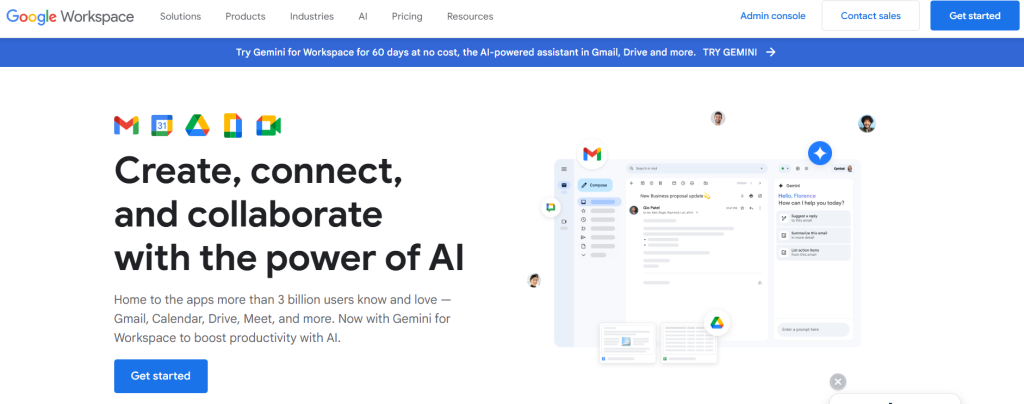Software operates differently based on its requirements, features, and implementation. One such model is Software as a Service (SaaS), where services are provided in exchange for a regular payment, such as monthly or yearly.
This SaaS model enables businesses to operate more efficiently, meet demand, and generate significant revenue. If you are interested in learning more about SaaS products and are in search of a reliable SaaS design agency in San Francisco, continue reading.
Let’s get started!
SaaS products are cloud-based applications accessible via the internet and available through subscription. For example, email services that offer free trials or free access for regular email usage are common SaaS products.
These cloud-based models make software automatic and capable of performing tasks such as auto-updating and auto security maintenance.
Features of SaaS Products
People are more likely to agree to pay regularly for a service. From an economic standpoint, this subscription model is advantageous since it can be canceled at any time, unlike traditional software licenses.
When choosing a SaaS product, users benefit from various advantages. They do not need to deal with technical issues like installation, configuration, or regular updates. Users simply pay for a subscription and start using the product.
SaaS applications utilize cloud servers for operation, making them accessible only over the internet. Users can access these services from any internet-connected device. A cloud typically consists of remote servers with internet access.
This architecture allows users to work with files from different devices, such as computers, tablets, or smartphones. Data storage and processing occur on servers in specific data centers, reducing the load on the user’s device. Social networks are a common example of this technology, where users can access their data from any device.
Developing within a SaaS strategy offers advantages such as:
- Security: Final software versions are stored in cloud hosting, preventing theft by attackers.
- Automatic Save: Information is automatically saved in the cloud for user convenience.
- Speed: SaaS applications enhance speed through server processing, eliminating the need for high RAM on client devices.
- Auto Updates: Software products update themselves, ensuring efficient operation without manual updates.
The benefits of SaaS products for end users are substantial, making the development of a SaaS product a promising business opportunity. However, selecting the right company for implementation is crucial.
Monetization in SaaS Product Development
Most SaaS products offer subscription plans, with only a few being free. The user pays a set amount, uses the service for a specific period, and is automatically charged for renewal.
Monetizing a SaaS application can be done in various ways, with the chosen model directly impacting developers’ revenue. The five most common monetization options are:
1. Fix Price
This model offers software at a specific price with a set functionality. Users pay a fixed rate, similar to traditional software licensing but with the option for monthly payments. An example is the image editing app Facetune.
Price Per Number of Users
In this model, the subscription cost increases with additional users. More users result in a higher subscription fee, allowing users to understand the cost based on usage. This approach provides flexibility in managing and forecasting income for the company.
2. Pay As You Go
This strategy links the final price to the number of services used. The more functions a user utilizes, the higher the price. Companies specializing in software development often use this model, basing prices on transactions, server usage, or API requests.
3. Price For Features
Unlike user-centric SaaS products, this model values functionality above all. Different price levels are set based on the available features, with higher tariffs for more features.
4. Freemium
This model offers a basic free version with paid packages for additional features. Users are enticed to upgrade by experiencing limitations in the free version. YouTube is an example, providing free access with premium features like ad-free viewing for a subscription fee.
Popular SaaS Applications And Services
Several popular tools operate on a SaaS model. Let’s explore some of them.
1. Figma
Figma is a graphic editor widely used by UI/UX designers. Operating in the cloud, it works seamlessly on any OS device and is ideal for collaborative work. Figma stores projects in the cloud, tracks changes, and allows participants to view and edit previous versions.
Figma Pricing
Starter Team: Free
Professional Team: $15/full seat/month
Organization: $45/full seat/month
Enterprise: $75/full seat/month
2. Slack

Slack is a popular messaging application that archives messages and files. Users can create group discussions in open channels and send private messages securely. The platform allows users to exchange various files, ensuring message and file retention.
Slack Pricing
- Basic: Free
- Pro: $4.38/month
- Business+: $15/month
- Enterprise Grid: Contact the Sales Team
3. Google Apps

Google Apps offers a suite of services, including email, calendars, document editing, video conferencing, and cloud storage. Google Drive provides cloud file storage for easy access to files.
Google Apps Pricing
- Business Starter: $6/month
- Business Standard: $12/month
- Business Plus: $18/month
- Enterprise: Contact the Sales Team
SaaS software development offers stability, scalability, accessibility, and ease of use for customers. With the right niche and effective implementation, a SaaS product can lead to a successful and profitable business.
In the sections above, we discussed the features of SaaS products, popular SaaS applications, and their pricing models. This information provides insight into the world of SaaS and the benefits it offers.